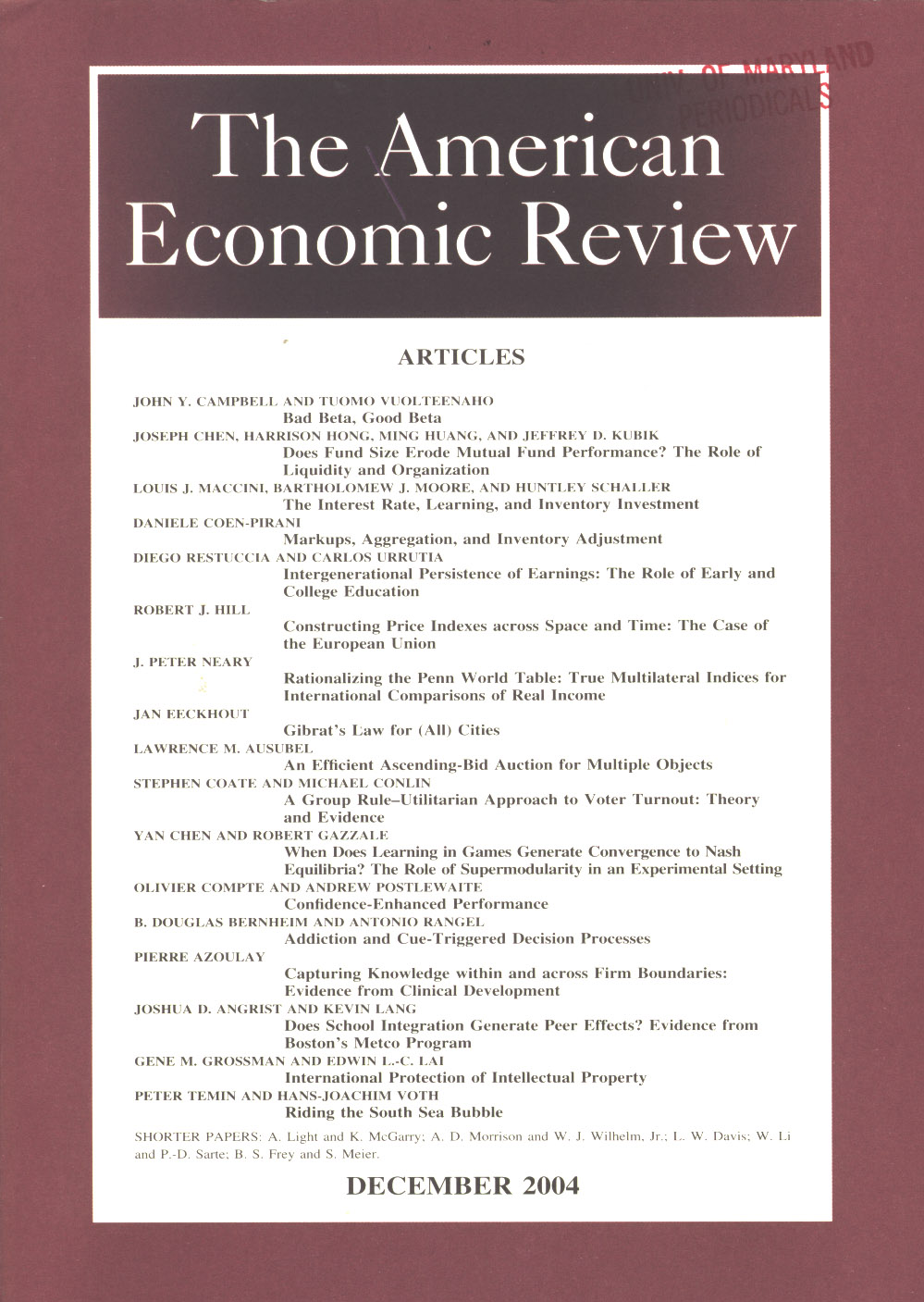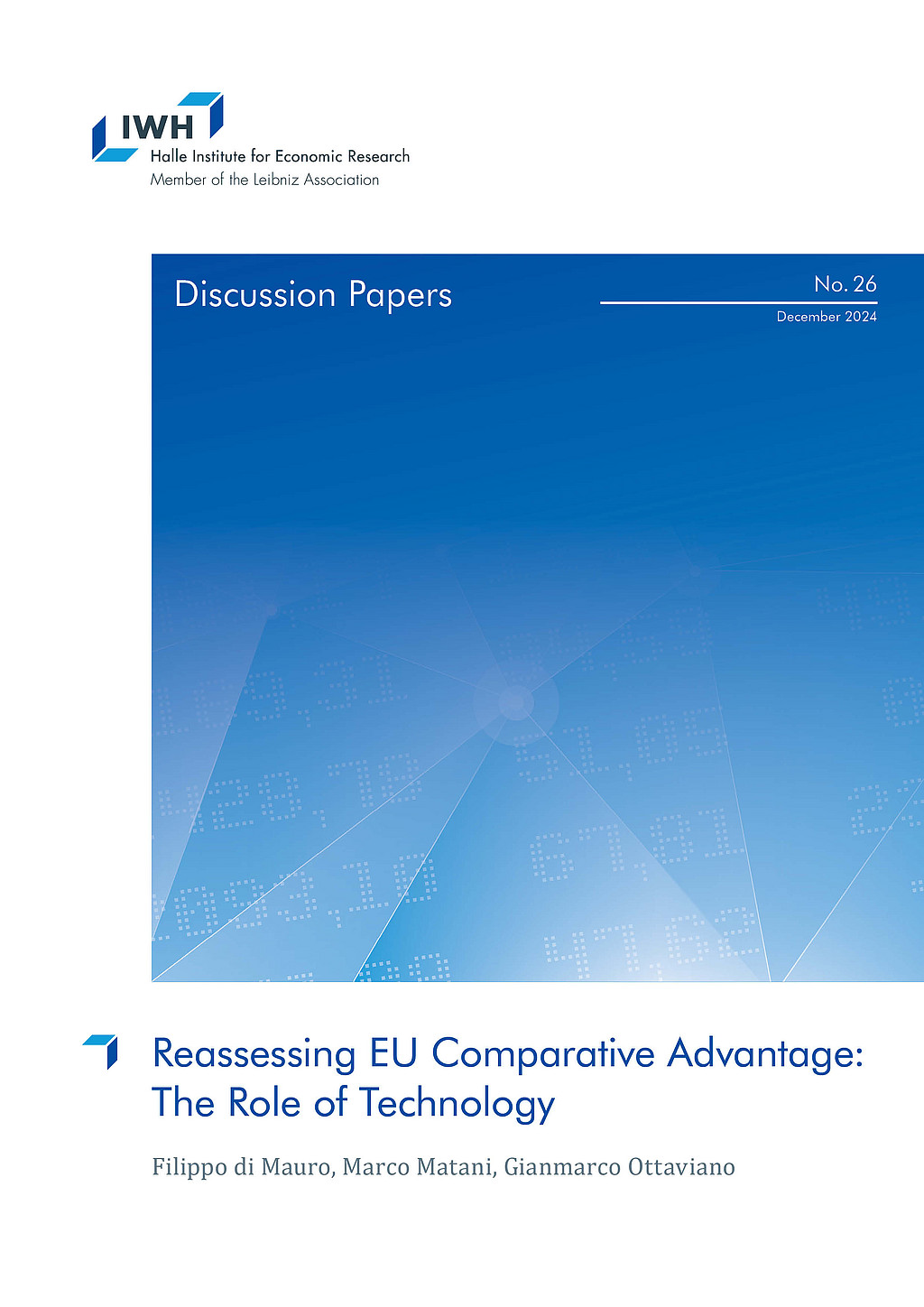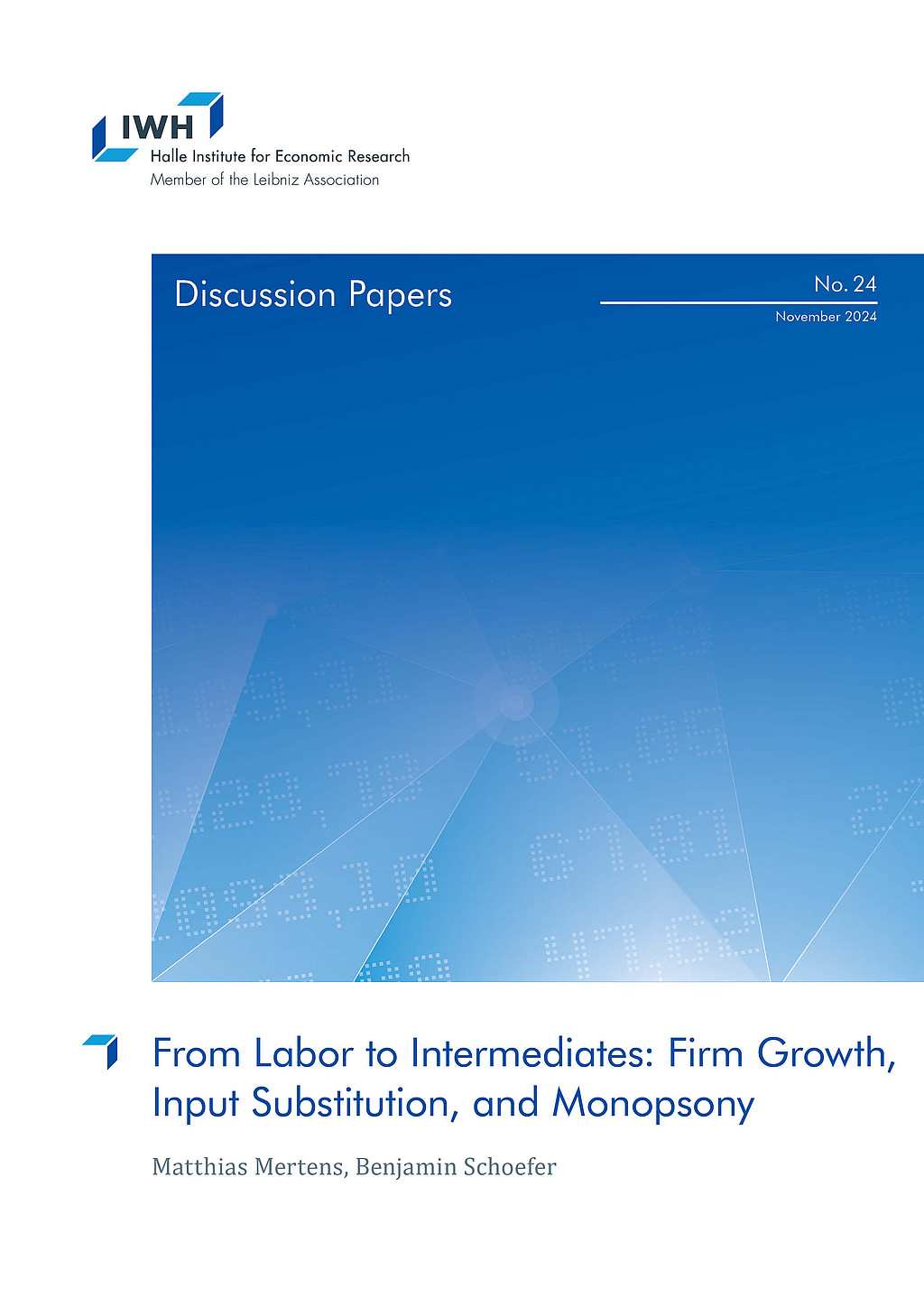Entrepreneurship, Innovation, and Productivity Growth
The research group “Entrepreneurship, Innovation, and Productivity Growth” tackles a broad set of research topics that are of relevance for our understanding of patterns of innovation and productivity growth and explores implications for workers and firms. Areas of particular focus include the decline in business dynamism, the growth in automation, entrepreneurship and innovation, and supply chains. The work is empirical in focus, it is grounded in microeconomic data research, but seeks to understand relevant macroeconomic trends.
Workpackage 1: Business Dynamism
The last decade has seen the explosion of research on business dynamism largely as a result of the development of new comprehensive firm and establishment level micro datasets. In this workpackage we exploit existing CompNet data to understand patterns of business dynamism in Europe.
In particular this subgroup seeks to explain the role of technological change and market power. The team documents the decline in young firm activity and reallocation, and estimates models that assess the causes and impacts on productivity growth (with Matthias Mertens, Sergio Inferrara, and Filippo Biondi).
Workpackage 2: Entrepreneurship
Going back to the days of Schumpeter, economists understand the important role entrepreneurs play in modern capitalist economies. This workpackage sets up a collaboration with the ZEW to develop a new data infrastructure and explore entrepreneurship in Germany broadly. Areas of research include:
a. Entrepreneurship and Firm Performance: Understanding High Growth Firms.
b. Innovative Firms and the Diffusion of Technology
c. (Im)Migration, Entrepreneurship and Regional Development
Workpackage 3: Automation
The introduction of robots and automation technologies in the workplace are fundamentally altering the balance of tasks and skills that are in demand. At the same time automation technologies increase the productivity of the workers and firms that make use of them relative to those that do not and can potentially lead to winners and losers. In this workpackage we conduct research on robot automation and its impacts on workers and firms. We focus our research both in Germany and the U.S..
The research group makes use of various administrative and survey datasets from a variety of sources and countries.
IWH Data Project: CompNet Database
The Competitiveness Research Network (CompNet) is a research network founded in 2012 to foster the debate on competitiveness issues among partner institutions and researchers. It aims at providing a robust theoretical and empirical link between micro-level drivers of competitiveness and macroeconomic performance for research and policy analysis purposes.
CompNet is funded by various European institutions, including among others: European Bank of Reconstruction and Development (EBRD); European Central Bank (ECB); European Commission (EC); European Investment Bank (EIB); European Stability Mechanism (ESM); France Stratégie; German Council of Economic Experts, Halle Institute for Economic Research (IWH); German Federal Ministry of Economic Affairs and Climate Action (BMWK); Tinbergen Institute (TI). CompNet is advised by leading researchers in the field of firm performance and has created a European micro-aggregated industry- and country-level database on indicators of firm- and country-level competitiveness and performance.
The database is unique in terms of its coverage and contents, particularly as, although being aggregated, it contains rich information on firm heterogeneity (i.e., distributional characteristics, like standard deviations and various percentiles of the firm distributions) across a large set of countries and industries in Europe. Among others, key variables included in the database are indicators of firm productivity, market power, firms’ financial situation, trade, and firm dynamics.
Research Cluster
Productivity and InstitutionsYour contact

- Department Centre for Business and Productivity Dynamics, Cbpd
Refereed Publications

Taking the Leap: The Determinants of Entrepreneurs Hiring Their First Employee
in: Journal of Economics and Management Strategy, No. 1, 2017
Abstract
Job creation is one of the most important aspects of entrepreneurship, but we know relatively little about the hiring patterns and decisions of start‐ups. Longitudinal data from the Integrated Longitudinal Business Database (iLBD), Kauffman Firm Survey (KFS), and the Growing America through Entrepreneurship (GATE) experiment are used to provide some of the first evidence in the literature on the determinants of taking the leap from a nonemployer to employer firm among start‐ups. Several interesting patterns emerge regarding the dynamics of nonemployer start‐ups hiring their first employee. Hiring rates among the universe of nonemployer start‐ups are very low, but increase when the population of nonemployers is focused on more growth‐oriented businesses such as incorporated and employer identification number businesses. If nonemployer start‐ups hire, the bulk of hiring occurs in the first few years of existence. After this point in time, relatively few nonemployer start‐ups hire an employee. Focusing on more growth‐ and employment‐oriented start‐ups in the KFS, we find that Asian‐owned and Hispanic‐owned start‐ups have higher rates of hiring their first employee than white‐owned start‐ups. Female‐owned start‐ups are roughly 10 percentage points less likely to hire their first employee by the first, second, and seventh years after start‐up. The education level of the owner, however, is not found to be associated with the probability of hiring an employee. Among business characteristics, we find evidence that business assets and intellectual property are associated with hiring the first employee. Using data from the largest random experiment providing entrepreneurship training in the United States ever conducted, we do not find evidence that entrepreneurship training increases the likelihood that nonemployers hire their first employee.

Where Has All the Skewness Gone? The Decline in High-growth (Young) Firms in the U.S.
in: European Economic Review, July 2016
Abstract
The pace of business dynamism and entrepreneurship in the U.S. has declined over recent decades. We show that the character of that decline changed around 2000. Since 2000 the decline in dynamism and entrepreneurship has been accompanied by a decline in high-growth young firms. Prior research has shown that the sustained contribution of business startups to job creation stems from a relatively small fraction of high-growth young firms. The presence of these high-growth young firms contributes to a highly (positively) skewed firm growth rate distribution. In 1999, a firm at the 90th percentile of the employment growth rate distribution grew about 31 percent faster than the median firm. Moreover, the 90−50 differential was 16 percent larger than the 50−10 differential reflecting the positive skewness of the employment growth rate distribution. We show that the shape of the firm employment growth distribution changes substantially in the post-2000 period. By 2007, the 90−50 differential was only 4 percent larger than the 50−10, and it continued to exhibit a trend decline through 2011. The overall decline reflects a sharp drop in the 90th percentile of the growth rate distribution accounted for by the declining share of young firms and the declining propensity for young firms to be high-growth firms.

Declining Business Dynamism: What We Know and the Way Forward
in: American Economic Review: Papers and Proceedings, No. 5, 2016
Abstract
A growing body of evidence indicates that the U.S. economy has become less dynamic in recent years. This trend is evident in declining rates of gross job and worker flows as well as declining rates of entrepreneurship and young firm activity, and the trend is pervasive across industries, regions, and firm size classes. We describe the evidence on these changes in the U.S. economy by reviewing existing research. We then describe new empirical facts about the relationship between establishment-level productivity and employment growth, framing our results in terms of canonical models of firm dynamics and suggesting empirically testable potential explanations.

Private Equity, Jobs, and Productivity
in: American Economic Review, No. 12, 2014
Abstract
Private equity critics claim that leveraged buyouts bring huge job losses and few gains in operating performance. To evaluate these claims, we construct and analyze a new dataset that covers US buyouts from 1980 to 2005. We track 3,200 target firms and their 150,000 establishments before and after acquisition, comparing to controls defined by industry, size, age, and prior growth. Buyouts lead to modest net job losses but large increases in gross job creation and destruction. Buyouts also bring TFP gains at target firms, mainly through accelerated exit of less productive establishments and greater entry of highly productive ones.

The Role of Entrepreneurship in US Job Creation and Economic Dynamism
in: Journal of Economic Perspectives, No. 3, 2014
Abstract
An optimal pace of business dynamics—encompassing the processes of entry, exit, expansion, and contraction—would balance the benefits of productivity and economic growth against the costs to firms and workers associated with reallocation of productive resources. It is difficult to prescribe what the optimal pace should be, but evidence accumulating from multiple datasets and methodologies suggests that the rate of business startups and the pace of employment dynamism in the US economy has fallen over recent decades and that this downward trend accelerated after 2000. A critical factor in accounting for the decline in business dynamics is a lower rate of business startups and the related decreasing role of dynamic young businesses in the economy. For example, the share of US employment accounted for by young firms has declined by almost 30 percent over the last 30 years. These trends suggest that incentives for entrepreneurs to start new firms in the United States have diminished over time. We do not identify all the factors underlying these trends in this paper but offer some clues based on the empirical patterns for specific sectors and geographic regions.
Working Papers

Credit Card Entrepreneurs
in: IWH Discussion Papers, No. 5, 2025
Abstract
<p>Utilizing near real-time QuickBooks data from over 1.6 million small businesses and a targeted survey, this paper highlights the critical role credit card financing plays for small business activity. We examine a two year period beginning in January of 2021. A turbulent period during which, credit card usage by small U.S. businesses nearly doubled, interest payments rose by 60%, and delinquencies reached 2.8%. We find, first, monthly credit card payments were up to three times higher than loan payments during this time. Second, we use targeted surveys of these small businesses to establish credit cards as a key financing source in response to firm-level shocks, such as uncertain cash flows and overdue invoices. Third, we establish the importance of credit cards as an important financial transmission mechanism. Following the Federal Reserve’s rate hikes in early 2022, banks cut credit card supply, leading to a 15.75% drop in balances and a 10% decline in revenue growth, as well as a 1.5% decrease in employment growth among U.S. small businesses. These higher rates also rendered interest payments unsustainable for many, contributing to half of the observed increase in delinquencies. Lastly, a simple heterogeneous firm model with a cash-in-hand constraint illustrates the significant macroeconomic impact of credit card financing on small business activity.</p>

Reassessing EU Comparative Advantage: The Role of Technology
in: IWH Discussion Papers, No. 26, 2024
Abstract
<p>Based on the sufficient statistics approach developed by Huang and Ottaviano (2024), we show how the state of technology of European industries relative to the rest of the world can be empirically assessed in a way that is simple in terms of computation, parsimonious in terms of data requirements, but still comprehensive in terms of information. The lack of systematic cross-industry correlation between export specialization and technological advantage suggests that standard measures of revealed comparative advantage only imperfectly capture a country’s technological prowess due to the concurrent influences of factor prices, market size, markups, firm selection and market share reallocation.</p>

From Labor to Intermediates: Firm Growth, Input Substitution, and Monopsony
in: IWH Discussion Papers, No. 24, 2024
Abstract
<p>We document and dissect a new stylized fact about firm growth: the shift from labor to intermediate inputs. This shift occurs in input quantities, cost and output shares, and output elasticities. We establish this fact using German firm-level data and replicate it in administrative firm data from 11 additional countries. We also document these patterns in micro-aggregated industry data for 20 European countries (and, with respect to industry cost shares, for the US). We rationalize this novel regularity within a parsimonious model featuring (i) an elasticity of substitution between intermediates and labor that exceeds unity, and (ii) an increasing shadow price of labor relative to intermediates, due to monopsony power over labor or labor adjustment costs. The shift from labor to intermediates accounts for one half to one third of the decline in the labor share in growing firms (the remainder is due to wage markdowns and markups) and rationalizes most of the labor share decline in growing industries.</p>

Declining Job Reallocation in Europe: The Role of Shocks, Market Power, and Technology
in: IWH Discussion Papers, No. 19, 2023
Abstract
<p>We study changes in job reallocation in Europe after 2000 using novel microaggregated data that we collected for 19 European countries. In all countries, we document broad-based declines in job reallocation rates that concern most economic sectors and size classes. These declines are mainly driven by dynamics within sectors, size, and age classes rather than by compositional changes. Simultaneously, employment shares of young firms decline. Consistent with US evidence, firms’ employment has become less responsive to productivity shocks. However, the dispersion of firms’ productivity shocks has decreased too. To enhance our understanding of these patterns, we derive and apply a firm-level framework that relates changes in firms’ market power, labor market imperfections, and production technology to firms’ responsiveness and job reallocation. Using German firm-level data, we find that changes in markups and labor output elasticities, rather than adjustment costs, are key in rationalizing declining responsiveness.</p>

Intuit QuickBooks Small Business Index: A New Employment Series for the US, Canada, and the UK
in: IWH Discussion Papers, No. 9, 2023
Abstract
Small and young businesses are essential for job creation, innovation, and economic growth. Even most of the superstar firms start their business life small and then grow over time. Small firms have less internal resources, which makes them more fragile and sensitive to macroeconomic conditions. This suggests the need for frequent and real-time monitoring of the small business sector’s health. Previously this was difficult due to a lack of appropriate data. This paper fills this important gap by developing a new Intuit QuickBooks Small Business Index that focuses on the smallest of small businesses with at most 9 workers in the US and the UK and at most 19 workers in Canada. The Index aggregates a sample of anonymous Quick- Books Online Payroll subscriber data (QBO Payroll sample) from 333,000 businesses in the US, 66,000 in Canada, and 25,000 in the UK. After comparing the QBO Payroll sample data to the official statistics, we remove the seasonal components and use a Flexible Least Squares method to calibrate the QBO Payroll sample data against official statistics. Finally, we use the estimated model and the QBO Payroll sample data to generate a near real-time index of economic activity. We show that the estimated model performs well both in-sample and out-of-sample. Additionally, we use this analysis for different regions and industries. Keywords:













